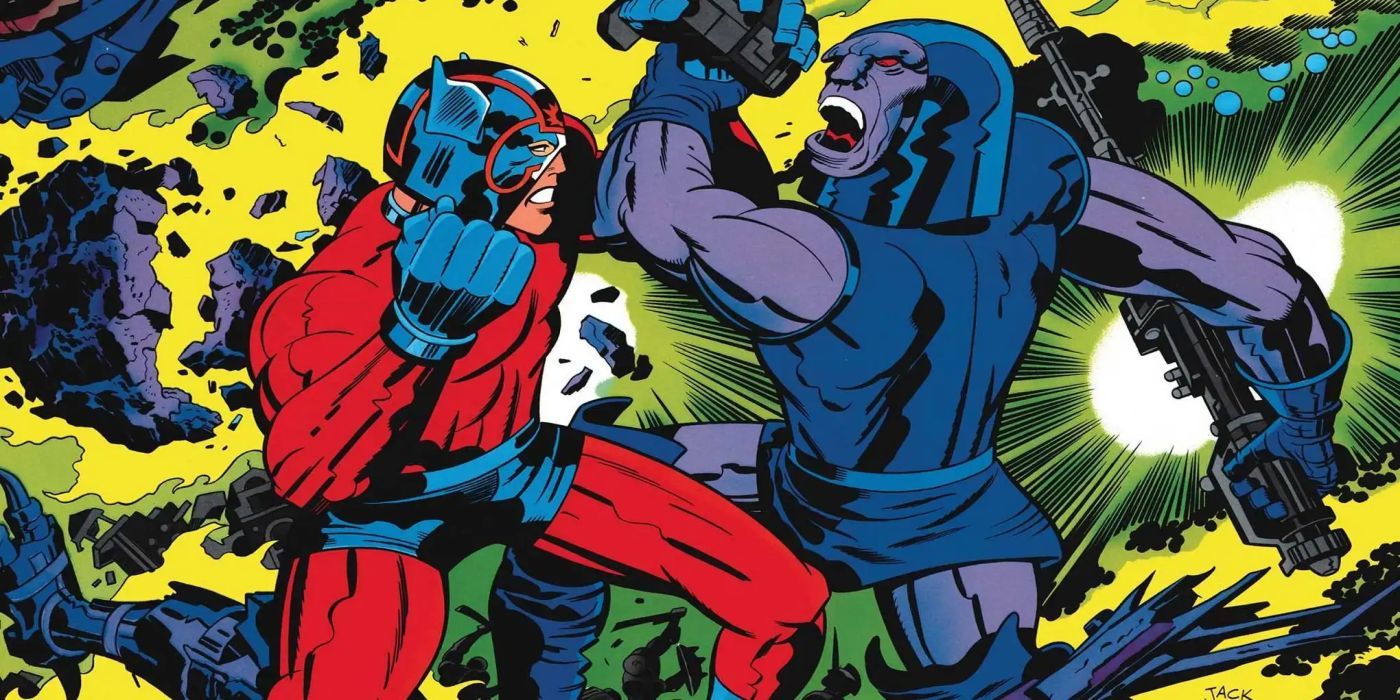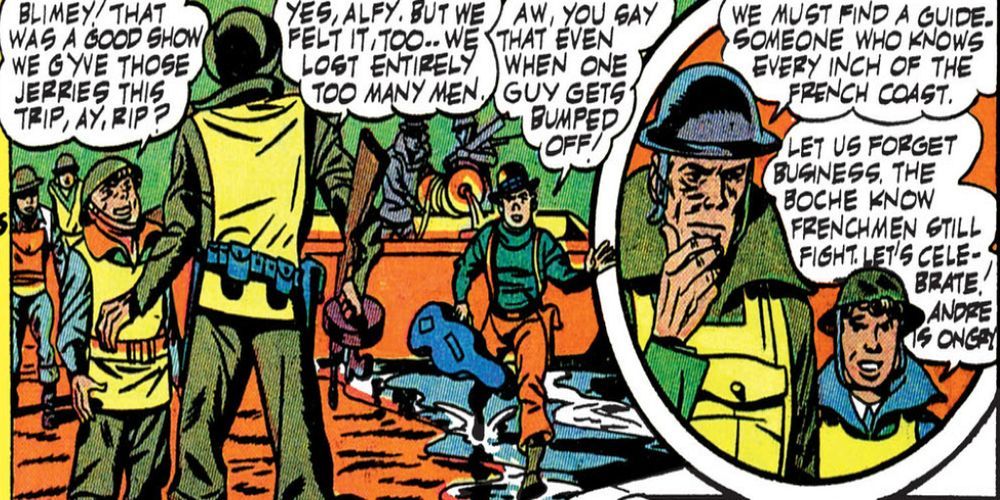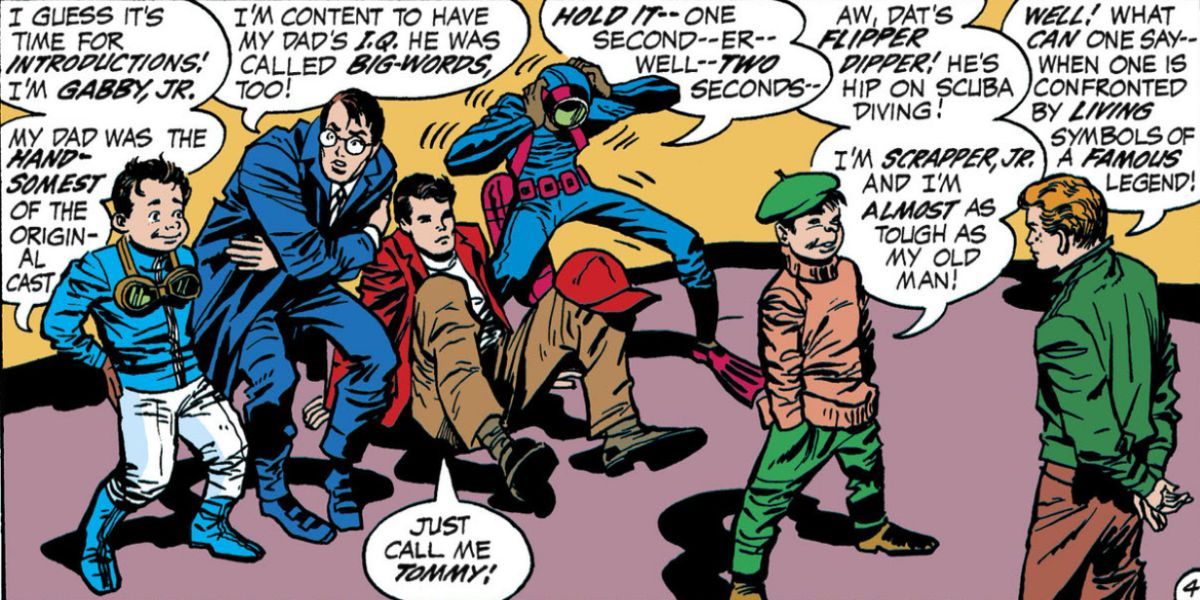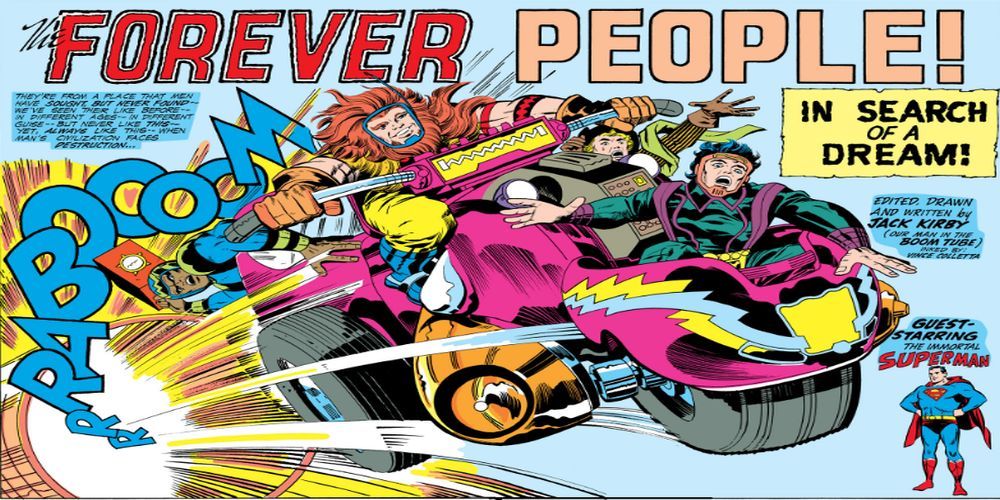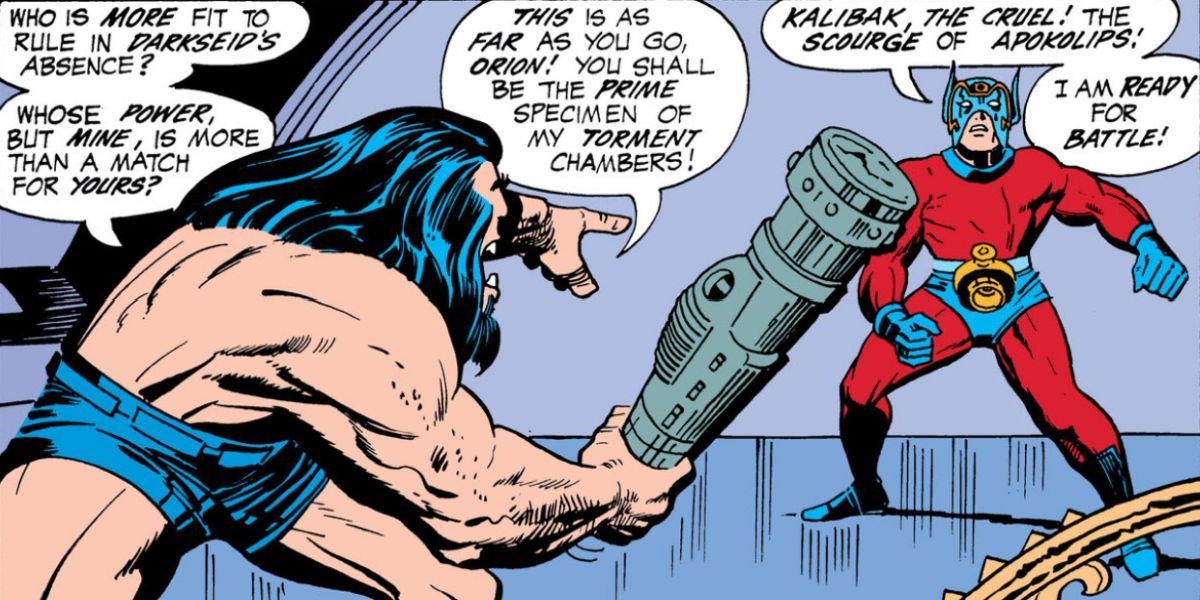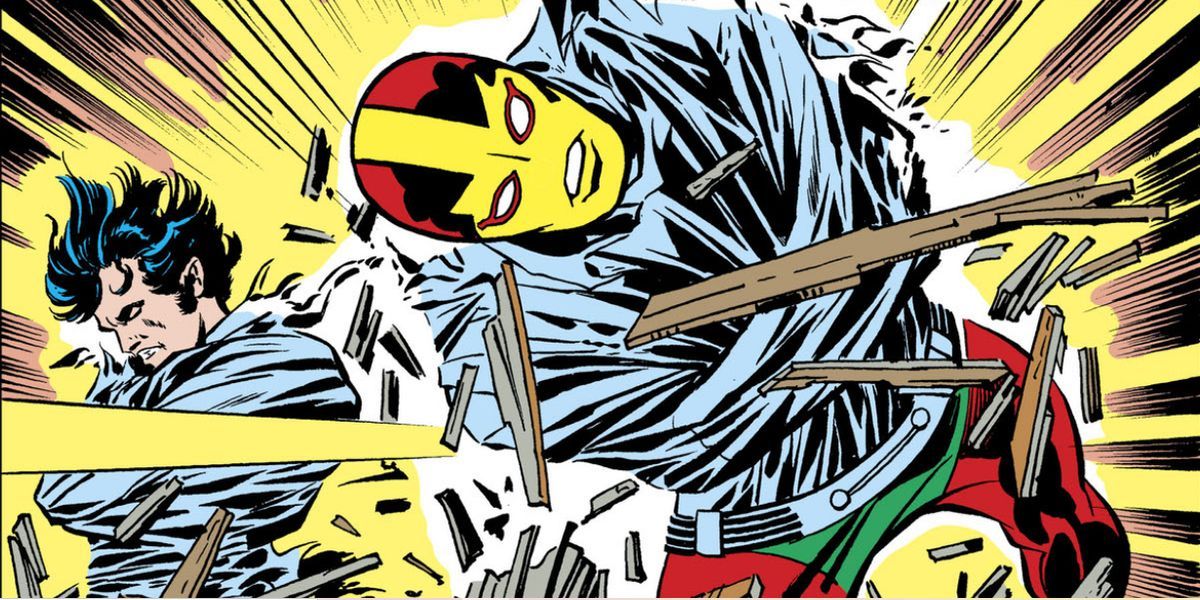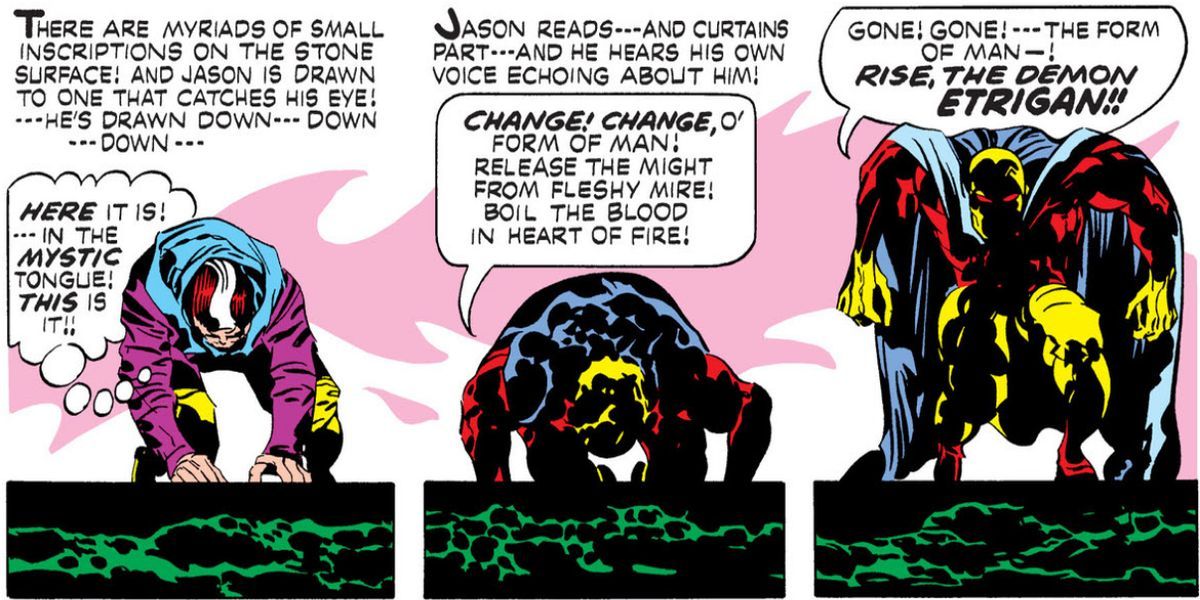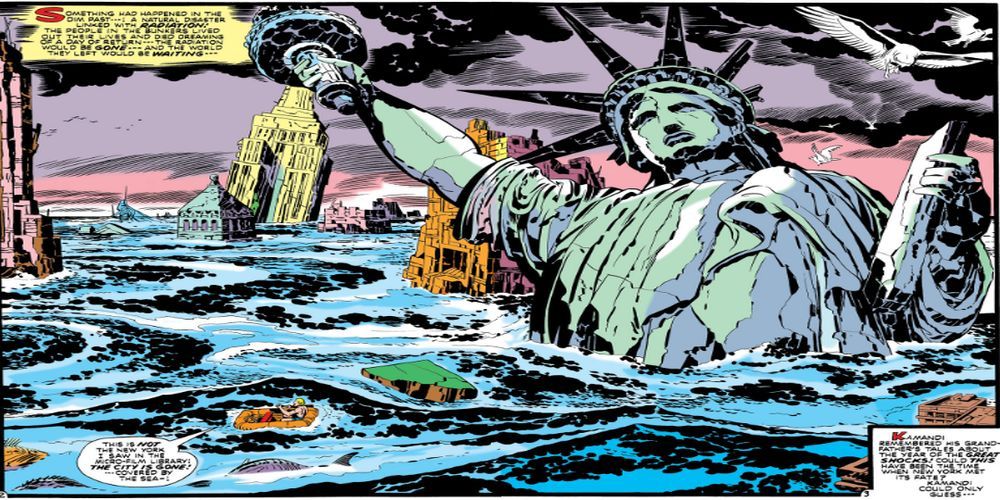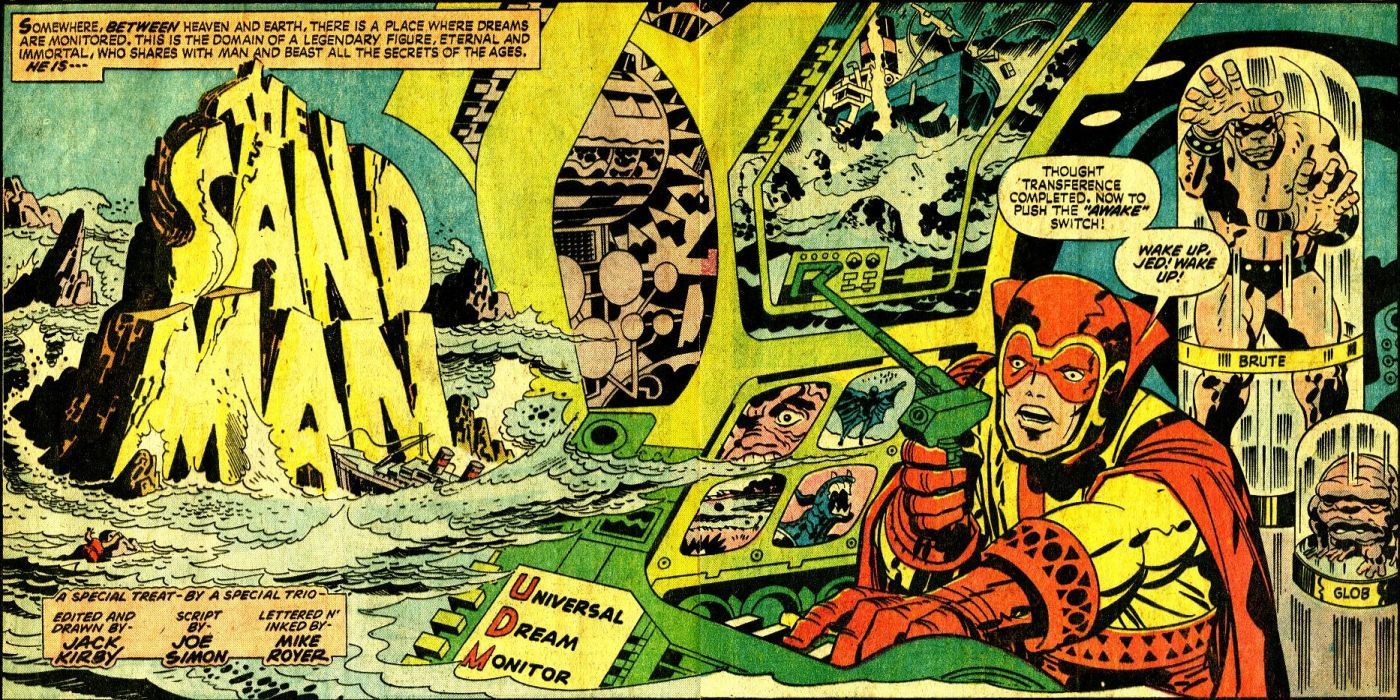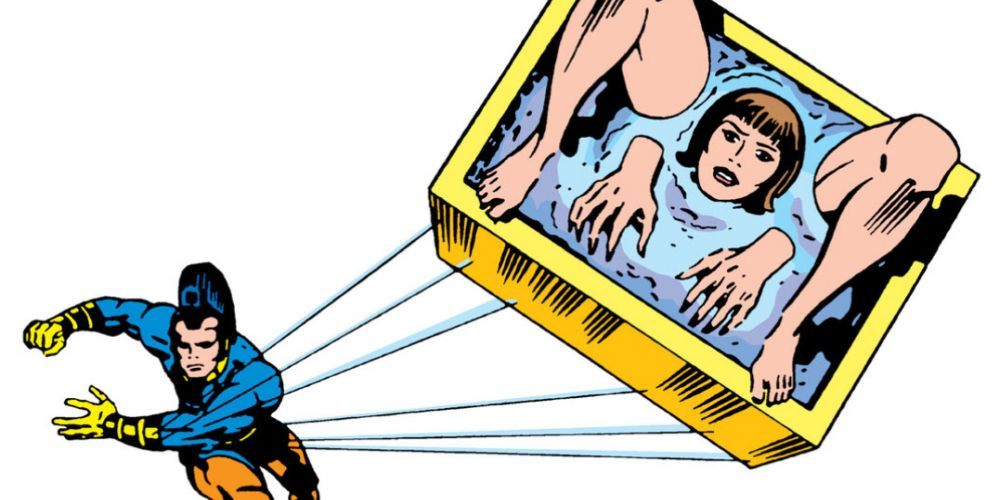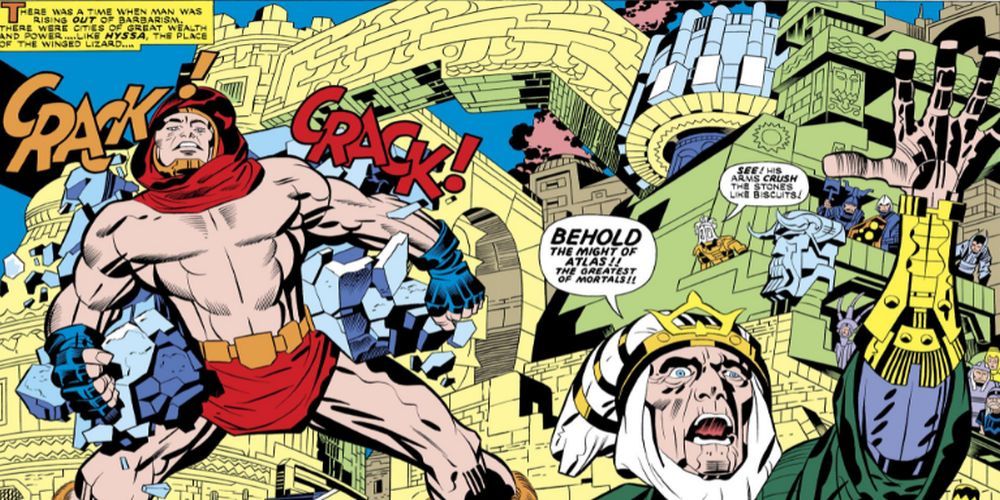There's prolific and then there's Jack Kirby. He isn't nicknamed "The King" for nothing. Starting in 1941, he wrote, drew, and created dozens of characters for Marvel, DC, and other comic book companies. At the House of Ideas, he worked with partner Joe Simon to develop Captain America. In the 1960s, along with Marvel editor-in-chief Stan Lee, Kirby created the Fantastic Four, Thor, Avengers, and X-Men.
Unfortunately, by the end of the 1960s, Kirby and Marvel had a falling out due to salary and contractual stipulations. So, he took his drawing board and moved back to DC Comics. Between 1970 and 1975, he created a new cavalcade of characters. Many of them remain active today. However, some fans might not realize they were the inspiration of the highly creative Kirby.
10 The Boy Commandos (1942) Battled The Ratzies
The early 1970s wasn't the first time Jack Kirby created characters for DC Comics. After writing and drawing ten issues of Captain American Comics, he moved over to DC in 1942. Right before he left for the Army he created two groups of Axis-fighting characters.
The first was the Boy Commandos. Introduced in Detective Comics #64, they were a quartet of teenagers from different Allied countries who helped defeat the Nazis. They were led by Captain Rip Carter. Though the concept of armed boys might not work in today's world, The Boy Commandos were a huge success in the 1940s. Not long after their creation, Kirby was granted his own series featuring the team.
9 The Newsboy Legion (1942) Spanned Two Generations
Meanwhile, over at Star Spangled Comics, Kirby debuted the Newsboy Legion. A group of orphans, the quartet sold newspapers on the corner to make a living. They also ended up getting in trouble a lot. Soon enough, policeman Jim Harper became their legal guardian.
Harper also became the Guardian, a superhero that helped the Legion battle neighborhood criminals and bullies. Plus, as the war ramped up, they took on local Axis figures on occasion. Kirby resurrected in Superman's Pal Jimmy Olsen #133. This time, they were the children of the original Legion who worked on government genetic experiments.
8 The Forever People (1971) Are Hippie New Gods
Kirby didn't wait long to introduce new concepts to DC Comics when he moved to their offices in 1970. After taking over and revamping Superman's Pal Jimmy Olsen, he set his sights on introducing his Fourth World concept. The first of these was The Forever People.
Originally raised on New Genesis, the six heroes relocate to Earth. They blend in with hippie culture through their speech and dress. The Forever People introduced several elements of the Fourth World that reign today. These include the Mother Box, the Boom Tube, and the evil Darkseid.
7 The New Gods (1971) Explored A Vast New Universe
The idea for the New Gods came several years earlier at Marvel. While working on the "Tales of Asgard" backup story in Thor, he wanted to create something about two planets at war. He took this concept to DC and introduced New Genesis and Apokolips in the New Gods series.
From the first page of the first issue, readers knew it was going to be an epic tale. On the side of good were Highfather and the heroes of Supertown. This included Orion, the son of the evil Darkseid. His minions not only tried to destroy New Genesis but also conquer Earth in the process. Though Kirby felt this tale should have a logical start and end, the battle continues.
6 Mister Miracle (1971) Introduced Darkseid's Adopted Son
There are mythical tales that detail how two warring races of gods reach some sort of truce through an exchange. Normally, it involves marriage. In the Fourth World, this happened when Highfather and Darkseid exchanged children. Hence, Scott Free, son of the New Genesis leader, ended up on Apokolips.
Escaping the dread planet, Scott lands on Earth and assumes the costumed role of Mister Miracle, super escape artist. The series, which initially ran for 18 issues, was based on the real-life stories of artist Jim Steranko. Before his role as a comic book artist, Steranko was a magician and escape artist.
5 Demon (1972) Was Bonded With A Camelot Knight
Though Kirby's Fourth World series were initially popular, their sales began to wane in 1972. So, he was asked by DC to come up with new titles outside of that universe. The first one called back to his love of magic and history. It was in the form of The Demon.
The character itself is the demon Etigran. A grotesque figure with superhuman powers and a tendency to speak in rhyme, he's a servant of Merlin's until the wizard's defeat by Morgaine Le Fey. Transformed into the human Jason Blood, Etigran remained subdued until the 20th century. By that time, Blood became a demonologist and ended up calling upon the Demon's powers via an incantation.
4 Kamandi (1972) Is The Last Boy On Earth
It's not conjectured that Mr. Kirby liked grandeur. Even his most minor creations, like the Newsboy Legion, displayed powerful landscapes. It's the same with Kirby's next creation for DC, Kamandi, The Last Boy on Earth.
The splash page at the start of the book's first issue details what the story is about. Earth is devastated after some type of war. Though Kamandi isn't the last human to survive in this apocalyptic world, he's the youngest and the most intelligent. He also encounters the roughest environments within the New York City area. For instance, he discovers a race of anthropomorphic tigers intent on destroying what's left of humanity.
3 Sandman (1974) Was An Entirely New Version Of The Golden Age Hero
Kirby's next entry for DC Comics, Sandman, was different than his other creations. First, he didn't handle every aspect of the book. Instead, he took on the role of artist and editor while Joe Simon and Michael L. Fleisher took on the scripting duties. Second, this version wasn't a revamp of the Golden Age hero, one he redesigned in the 1940s.
Instead, this Sandman is Dr. Garrett Sanford. Using advanced machinery he can access the Dream Dimension. This initially allows him to save the U.S. president from a nightmare monster. Unfortunately, he gets stuck in this dimension. On the upside, he can still return to Earth one hour a day as Sandman to help others. Eventually, the Dream Dimension was revealed to be part of the Dreaming.
2 OMAC (1975) Was A Corporate Nobody Turned Global Hero
Kirby's last major comic release was about a nobody named Buddy Blank. Working as a corporate stooge in a near-future world, Buddy's presence is noticed by an AI satellite named Brother Eye. In turn, it enables Buddy with superhuman powers to become The One Man Army Corps, OMAC for short.
The writer and artist first considered the character for Marvel during his tenure there in the 1960s. It was envisioned as a version of Captain America in the future. While OMAC's original run was short, the concept and character were utilized later in the Superman & Batman: Generations 3 maxiseries by John Byrne and various Infinite Crisis books.
1 Atlas (1975) Revises The Titan Of Greek Mythology
Before Kirby returned to Marvel in 1975 he left three creations at DC that were added to the company's anthology series 1st Issue Special. One was a remake of the Golden Age hero Manhunter and the second was The Dingbats of Danger Street, which was a return to writing about teenage rebels. To launch 1st Issue Special, Kirby introduced an updated version of Atlas.
Instead of holding up the world as his punishment, this version is a young man with superhuman strength that watches his family die when a boy. His goal is to defeat those that currently rule his world. In the last panel, Atlas claims he is the conqueror of this evil kingdom. Readers are left with a cliffhanger and asked to write in if they want to see more of the character.

